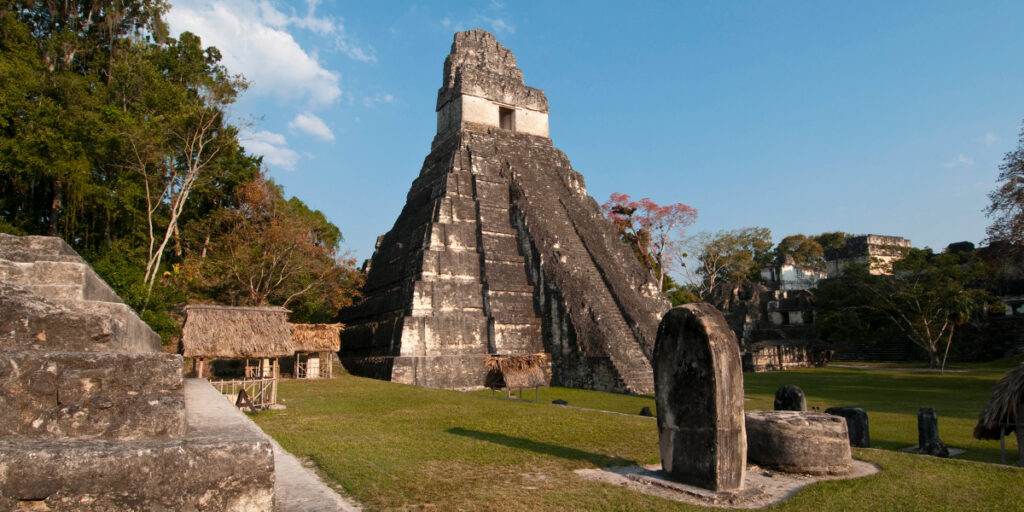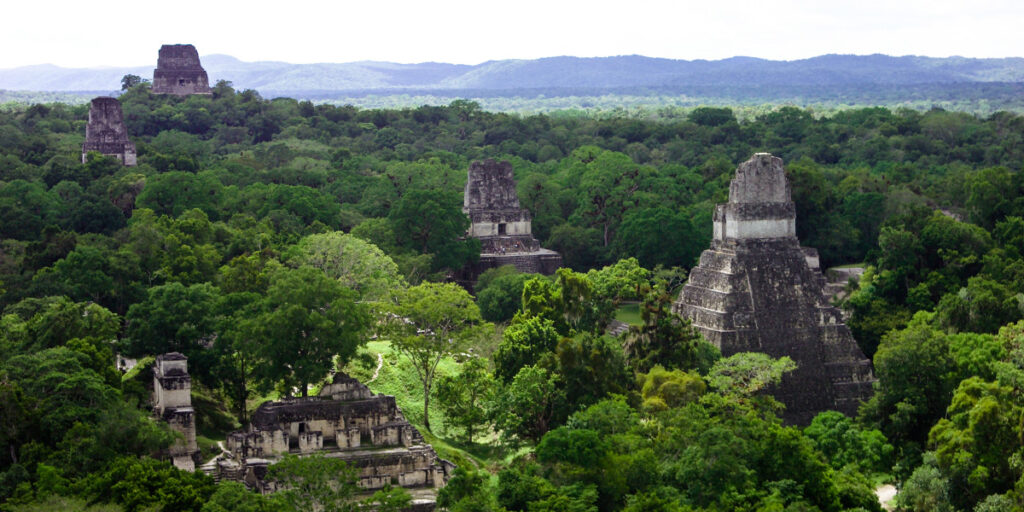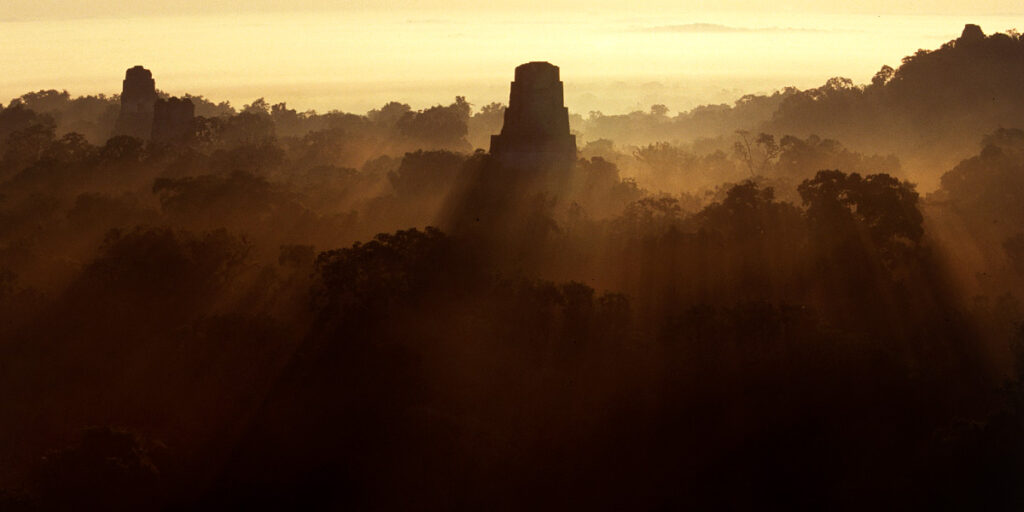Tikal National Park
Tikal is known by the monumentality of its buildings, with a continuous occupation of 1,500 years (from 600 B.C. to 900 A.D.), during which time it played a leading role in the social and political organization of the lowlands. Tikal is one of the maximum exponents of the traditional architectural style of the Central Maya lowlands, displaying exquisite examples of temples in the form of stepped pyramids such as, the Great Jaguar (Temple I), the Temple of the Masks (Temple II), the Temple of the Bicephalous Serpent (Temple IV) and the Temple of the Inscriptions (Temple VI), as well as squares, the Lost World Complex, , the Twin Pyramids Complex, ball games, a vast collection of carved monuments, and a large number of sites around it.
Tikal presents a long historical sequence told in its steles and altars with a direct succession of the royal dynasty. Due to its cultural and natural wealth of exceptional universal value, in 1979 it was declared by UNESCO as the first Cultural and Natural World Heritage Site, with a significant sample of humid subtropical forest, habitat of numerous species of flora and fauna.
Currently, Tikal is one of the most important tourist destinations in Guatemala, and one of the most interesting sites for birdwatchers.




